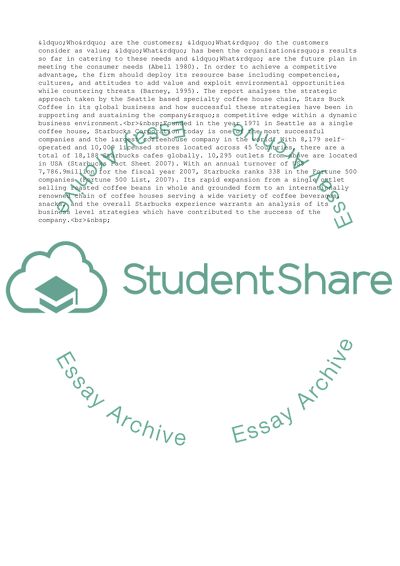Cite this document
(“Coffee House Chain: Starbucks Corporation Essay”, n.d.)
Coffee House Chain: Starbucks Corporation Essay. Retrieved from https://studentshare.org/business/1542381-strategic-analysis-report-case-study
Coffee House Chain: Starbucks Corporation Essay. Retrieved from https://studentshare.org/business/1542381-strategic-analysis-report-case-study
(Coffee House Chain: Starbucks Corporation Essay)
Coffee House Chain: Starbucks Corporation Essay. https://studentshare.org/business/1542381-strategic-analysis-report-case-study.
Coffee House Chain: Starbucks Corporation Essay. https://studentshare.org/business/1542381-strategic-analysis-report-case-study.
“Coffee House Chain: Starbucks Corporation Essay”, n.d. https://studentshare.org/business/1542381-strategic-analysis-report-case-study.


